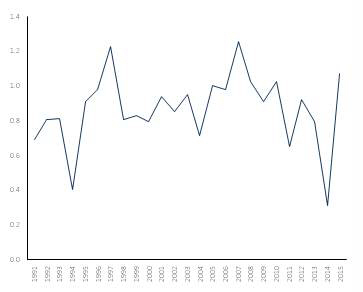1 Arditti, F.DÔÇťÔÇťRisk and the required return on equityÔÇŁÔÇŁ, Journal of Finance, (1967), Vol. 22, No. 1, pp. 19-36.

2 Baek, K and Park, Y.SÔÇťÔÇťShip finance as an alternative investment asset for pension fundsÔÇŁÔÇŁ, Journal of International Trande and Commerce, (2016), Vol. 12, No. 2, pp. 425-444.

3 Bos, T and Newbold, PÔÇťÔÇťAn empirical investigation of the possibility of stochastic systematic risk in the market modelÔÇŁÔÇŁ, The Journal of Business, (1984), Vol. 57, No. 1, pp. 35-41.

4 Drobetz, W, Menzel, C and Schroder, HÔÇťÔÇťSystematic risk behavior in cyclical industries: The case of shippingÔÇŁÔÇŁ, Transportation Research Part E: Logistics and Transportation Review, (2016), Vol. 88, pp. 129-145.

5 Drobetz, W, Schilling, D and Tegtmeier, LÔÇťÔÇťCommon risk factors in the returns of shipping stocksÔÇŁÔÇŁ, Maritime Policy and Management, (2003), Vol. 37, No. 2, pp. 93-120.

6 Gomes, J, Kogan, L and Zhang, LÔÇťÔÇťEquilibrium cross section of returnsÔÇŁÔÇŁ, Journal of Political Economy, (2003), Vol. 111, No. 4, pp. 693-732.

7 Gong, S.X.H, Firth, M and Cullinane, KÔÇťÔÇťBeta estimation and stability in the US-listed international transportation industryÔÇŁÔÇŁ, Review of Pacific Basin Financial Markets and Policies, (2006), Vol. 9, No. 3, pp. 463-490.

8 Kavussanos, M.G and Maroulis, S.NÔÇťÔÇťRisk and returns of US water transportation stocks over time and over bull and bear market conditionsÔÇŁÔÇŁ, Policy and Management, (1997), Vol. 24, No. 2, pp. 145-158.
9 King, BÔÇťÔÇťMarket and industry factors in stockprice behaviorÔÇŁÔÇŁ, Journal of Business, (1966), Vol. 39, No. 1, pp. 139-190.

10 Lee, E.J and Park, M.SÔÇťÔÇťA study on risk factors and market risk valuation of ship finance - Focused on ship investment companyÔÇŁÔÇŁ, Journal of Maritime Business, (2010), Vol. 17, pp. 213-242.
11 Lee, J.S and Jang, S.SÔÇťÔÇťThe systematic-risk determinants of the US airline industryÔÇŁÔÇŁ, Tourism Management, (2007), Vol. 28, No. 2, pp. 434-442.

12 Lewellen, J and Nagel, SÔÇťÔÇťThe conditional CAPM does no explain asset-pricing anomaliesÔÇŁÔÇŁ, Journal of Financial Economics, (2006), Vol. 82, No. 2, pp. 289-314.

13 Lee, S.D and Chang, M.HÔÇťÔÇťA study on economic operation for liner-fleet by fluctuation of fuel oil price - focusing on the case of 'H' shipping companyÔÇŁÔÇŁ, Journal of Navigation and Port Research International Edition, (2011), Vol. 35, No. 9, pp. 765-776.

14 Lim, S.S and Lee, K.HÔÇťÔÇťAn empirical analysis of the relationship between stock prices of shipping firms and major macroeconomic variablesÔÇŁÔÇŁ, Korean Journal of Financial Engineering, (2014), Vol. 14, No. 4, pp. 93-118.
15 Lintner, JÔÇťÔÇťThe valuation of risk assets and the selection of risky investments in stock portfolio and capital budgetsÔÇŁÔÇŁ, Review of Economics and Statistics, (1965), Vol. 47, No. 1, pp. 13-37.
16 McLaney, E, Pointon, J, Thomas, M and Tucker, JÔÇťÔÇťPractitionersÔÇÖ perspectives on the UK cost of capitalÔÇŁÔÇŁ, The European Journal of Finance, (2004), Vol. 10, No. 2, pp. 123-138.

17 Melicher, R.WÔÇťÔÇťFinancial factors which influence beta variations within an homogeneous industry environmentÔÇŁÔÇŁ, Journal of Financial and Quantitative Analysis, (1974), Vol. 9, No. 2, pp. 231-241.

18 Oh, S and Park, KÔÇťÔÇťEstimating the size premium and the cost of equity for Korean listed companiesÔÇŁÔÇŁ, Korean Journal of Financial Management, (2015), Vol. 32, No. 3, pp. 107-142.
19 Sharpe, LÔÇťÔÇťCapital asset prices: a theory of market equilibrium under conditions of riskÔÇŁÔÇŁ, Journal of Finance, (1964), Vol. 19, No. 3, pp. 425-442.


20 Tezuka, K, Ishii, M and Ishizaka, MÔÇťÔÇťRelationship between CAPM-B and market changes in the Japanese liner shipping industryÔÇŁÔÇŁ, Maritime Policy and Managmenet, (2012), Vol. 39, No. 3, pp. 297-319.
21 Yang, H.J, Lee, K.H and Kim, M.HÔÇťÔÇťAn empirical study of the impact of exchange rate fluctuation on profitability of Korean ocean-going shipping companiesÔÇŁÔÇŁ, Journal of Shipping and Logistics, (2015), Vol. 31, No. 2, pp. 407-425.





 PDF Links
PDF Links PubReader
PubReader Full text via DOI
Full text via DOI Download Citation
Download Citation Print
Print






